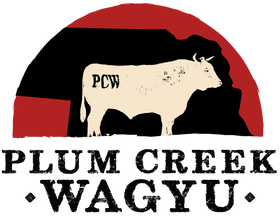Wagyu vs. Kobe Beef: What’s the Difference?
When it comes to premium beef, two names stand out: Wagyu and Kobe. While they’re often used interchangeably, they’re not the same. Understanding the distinctions can help you appreciate the unique qualities of each and make an informed choice for your next indulgent meal.
What is Wagyu?
"Wagyu" translates to "Japanese cow," and it refers to four specific breeds of cattle: Japanese Black, Japanese Brown, Japanese Polled, and Japanese Shorthorn. Wagyu cattle are renowned for their rich marbling, which results in unmatched tenderness, juiciness, and flavor. This luxurious fat distribution is due to meticulous breeding, a high-energy diet, and a stress-free environment.
Wagyu beef is produced worldwide, including in Japan, the United States, and Australia. Each region’s beef varies slightly based on factors like feed, climate, and breeding practices. However, the term "Wagyu" is broad and encompasses a variety of beef products within these breeds.
What is Kobe Beef?
Kobe beef is a specific type of Wagyu beef that comes from the Tajima strain of Japanese Black cattle, raised exclusively in Japan’s Hyōgo Prefecture. The name "Kobe" is protected by strict regulations, and only beef meeting rigorous criteria can bear the Kobe name.
To qualify as Kobe beef:
-
The cattle must be purebred Tajima Wagyu.
-
They must be born, raised, and slaughtered in Hyōgo Prefecture.
-
The beef must meet strict marbling and quality standards, typically achieving an A4 or A5 grade.
-
It must be certified by the Kobe Beef Marketing and Distribution Promotion Association.
This exclusivity makes Kobe beef rarer and more expensive than general Wagyu.
Key Differences
-
Origin: All Kobe beef is Wagyu, but not all Wagyu is Kobe. Wagyu can come from various regions and breeds, while Kobe is strictly tied to Hyōgo Prefecture and the Tajima strain.
-
Grading Standards: Kobe beef adheres to some of the highest grading standards in the world, ensuring exceptional marbling, flavor, and texture. While Wagyu beef is also graded, the standards and quality may vary depending on the producer and region.
-
Availability: Kobe beef is much rarer than Wagyu. In fact, only a limited number of certified Kobe beef cattle are slaughtered annually, making it a delicacy even within Japan.
-
Price: Due to its rarity and stringent requirements, Kobe beef often commands a higher price than other Wagyu varieties.
Similarities
Both Wagyu and Kobe are prized for their:
-
Exceptional marbling, which delivers a buttery texture and rich flavor.
-
Unique fat composition, high in unsaturated fats, which melts at a lower temperature and enhances the taste.
-
Meticulous care in breeding, feeding, and raising the cattle.
How to Choose Between Wagyu and Kobe
When deciding between Wagyu and Kobe, consider your priorities:
-
If you want the pinnacle of exclusivity and tradition, Kobe beef is the ultimate choice.
-
If you’re looking for a luxurious beef experience with more options and variety, Wagyu offers plenty of outstanding cuts and price points.
Conclusion
While Wagyu and Kobe beef share a heritage of excellence, their differences lie in origin, grading, and exclusivity. Both offer a dining experience that’s second to none, making either choice a celebration of culinary luxury. Whether you’re indulging in Wagyu or splurging on Kobe, you’re in for an unforgettable treat.
Related Posts
A Day in the Life of a Wagyu Rancher: Behind the Scenes at Plum Creek Wagyu
Get a behind-the-scenes look at a day in the life of a Wagyu rancher! From early morning feedings to hands-on care and sustainable ranching practices, discover what it takes to raise premium Wagyu beef.
The Wagyu Lifecycle: From Calf to Culinary Delight
Ever wondered what makes Wagyu beef so special? It all starts long before it reaches your plate. From careful breeding and specialized feeding programs to the meticulous care each animal receives, the journey of a Wagyu calf is one of precision and dedication. Learn how these cattle are raised with unparalleled attention to detail, ensuring that every bite of Wagyu beef delivers the rich marbling and tenderness it's famous for.
The Top 5 Wagyu Beef Mistakes to Avoid When Hosting a Dinner Party
Hosting a dinner party with Wagyu beef? Avoid these common mistakes, from overcooking the beef to choosing the wrong wine pairings. Learn the best tips for preparing and serving Wagyu to ensure a luxurious and unforgettable dining experience.
Wagyu Beef and the Art of Pairing with Cheese: A Gourmet Experience
Discover the best cheese pairings for Wagyu beef, including blue cheese, aged Gouda, and Brie. Learn how to elevate your next meal with these gourmet pairings, designed to complement the richness of Wagyu beef and enhance its luxurious flavor.
Sustainability in Wagyu Ranching: How Small-Scale Producers are Making a Difference
Discover how small-scale Wagyu ranchers are adopting sustainable farming practices to reduce their environmental impact. Learn about regenerative land management, water conservation, ethical animal welfare, and how these practices help make Wagyu beef production more eco-friendly and responsible.
Wagyu Beef for the Modern Cook: Incorporating It into Trendy Dishes
Discover creative ways to incorporate Wagyu beef into trendy dishes like sushi, tacos, ramen, and burgers. Learn how this luxurious, versatile beef is elevating modern cuisine with its rich flavor and melt-in-your-mouth texture, making it the ultimate ingredient for the modern cook.








